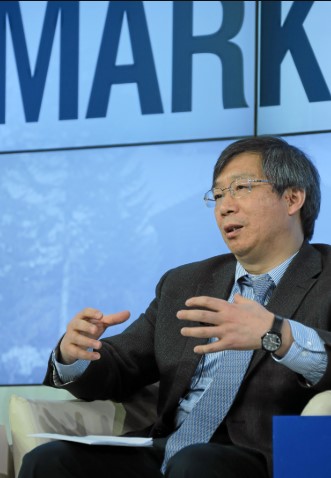The People’s Bank of China‘s (PBoC) governor wants to improve the risk management of the DCEP. Meanwhile, Beijing pilots China’s first “Supervision Sandbox” program.
According to the central bank of China, they will continue to study their DCEP and find ways to strengthen its risk management attributes.

Caixin hosted a seminar themed “Financial Technology and Free Use of RMB” last April 17. One of the speakers was Yi Gang of the (PBoC). He had mentioned the Central Bank Digital Currency’s (CBDC) monumental progress as a digital currency.
For now, internal pilot tests have been conducted in several cities as prelude to the launch this month.
Governor Yi Gang recognized the significance of fintech in the pandemic. However, he still believes that commercial banks are the main drivers of financial services, with tech companies being a huge support in its innovation.
He also added that the digital yuan’s globalization will be driven by equal competition in the market.
Supervision Sandbox
In 2019, Beijing became the first city in China to pilot the ‘Supervision Sandbox’, a project in which the objective is to actively supervise financial technology innovation.
The first batch includes six projects that have already been included in the box as the second batch is still under review.
The first batch consisted mainly of licensed financial institutions that focus on the application of blockchain, big data, internet of things, artificial intelligence, and supply chain management for fintech.
The PBoC started the pilot of fintech supervision to six cities including Suzhou, Shanghai, and Shenzen, which advanced the progress of the supervision sandbox. For now, the fintech innovation supervision and supervision sandbox need to be further improved as other cities carry out the pilot program.
Five Aspects of Supervision Sandbox
According Yang Tao, Dean of the Beijing Liyan Institute of Finance and Development, the sandbox has five significant aspects:
First, they need to clarify the risk characteristics of the supervision target including the screening of systemic and non-systemic risks.
The second aspect is the goal of fintech supervision. They must assess whether this supervision can advance the growth of fintech innovation under current circumstances. That is to say, the fintech products and services must adequately resolve current issues in traditional financial services and effectively benefit the masses.
Then, they also need to organize the main body of fintech supervisions, from central financial departments, local financial management departments, industry associations, and other bodies that require a sophisticated level of cooperation and coordination.
Fourth, they must revolutionize the supervision methods of fintech by using various innovative technologies to solve the deficiencies of legacy supervision systems. This includes the lack of on-site supervision capabilities, inadequate standardization of data statistical systems, and high costs.
And lastly, there must be a guarantee of innovation in the supervision of fintech, not solely on the regulators, but also from the institutions, foundations, and other basic elements.
With all these five aspects laid out, it’s crystal clear that the central bank of china is taking a critical step in building a new and improved fintech regulatory system, which is a great foundation for China’s DCEP.




















